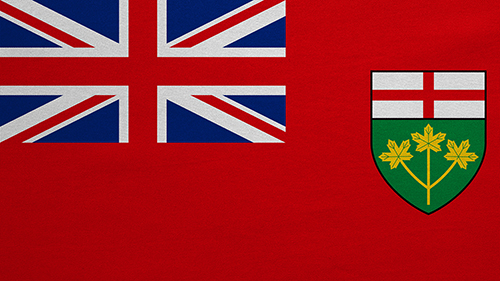
Ontario Returning 27 Public Health Regions to Strengthened COVID-19 Response Framework
TORONTO — In consultation with the Chief Medical Officer of Health, the Ontario government is transitioning twenty-seven public health regions out of the shutdown and into a revised and strengthened COVID-19 Response Framework: Keeping Ontario Safe and Open (the “Framework”). The four remaining public health regions, Toronto Public Health, Peel Public Health, York Region Public Health and North Bay Parry Sound District, will remain in the shutdown, and the Stay-at-Home order and all existing public health and workplace safety measures will continue to apply to these four public health regions.
“The health and safety of Ontarians remains our number one priority. While we are cautiously and gradually transitioning some regions out of shutdown, with the risk of new variants this is not a reopening or a return to normal,” said Christine Elliott, Deputy Premier and Minister of Health. “Until vaccines are widely available, It remains critical that all individuals and families continue to adhere to public health measures and stay home as much as possible to protect themselves, their loved ones and their communities.”
Based on a general improvement in trends of key indicators, including lower transmission of COVID-19, improving hospital capacity, and available public health capacity to conduct rapid case and contact management, the following public health regions will be moving back to the Framework on Tuesday, February 16, 2021 at 12:01 a.m. and will no longer be subject to the Stay-at-Home order:
Grey-Lockdown:
· Niagara Region Public Health
Red-Control:
· Chatham-Kent Public Health;
· City of Hamilton Public Health Services;
· Durham Region Health Department;
· Halton Region Public Health;
· Middlesex-London Health Unit;
· Region of Waterloo Public Health and Emergency Services;
· Simcoe-Muskoka District Health Unit;
· Southwestern Public Health;
· Thunder Bay District Health Unit;
· Wellington-Dufferin Guelph Public Health; and
· Windsor-Essex County Health Unit.
Orange-Restrict:
· Brant County Health Unit;
· Eastern Ontario Health Unit;
· Haldimand-Norfolk Health Unit;
· Haliburton, Kawartha, Pine Ridge District Health Unit;
· Huron Perth Public Health;
· Lambton Public Health;
· Ottawa Public Health;
· Porcupine Health Unit; and
· Public Health Sudbury and Districts.
Yellow-Protect:
· Algoma Public Health;
· Grey Bruce Health Unit;
· Northwestern Health Unit; and
· Peterborough Public Health.
Green-Prevent:
· Leeds, Grenville and Lanark District Health Unit; and
· Timiskaming Health Unit.
For North Bay Parry Sound District, Peel Public Health, Toronto Public Health and York Region Public Health, it is proposed that the shutdown measures and the Stay-at-Home order will continue to apply until at least Monday, February 22, 2021. Please visit Ontario.ca/covidresponse for the full list of public health region classifications.
After returning to the Framework, public health regions will stay in their level for at least two weeks at which time, the government will assess the impact of public health and workplace safety measures to determine if the region should stay where they are or be moved to a different level. Public health regions will move up through the levels, if necessary, based on the set indicators and thresholds outlined in the Framework.
Visitor restrictions for long-term care homes will once again apply to those homes in the public health regions that are in the Orange-Restrict level or higher. In addition, long-term care homes must implement enhanced testing requirements.
Recognizing the risk posed by new variants to the province’s pandemic response, Ontario is introducing an “emergency brake” to allow the Chief Medical Officer of Health, in consultation with the local medical officer of health, to immediately advise moving a region into Grey-Lockdown to interrupt transmission. Local medical officers of health also have the ability to issue Section 22 orders under the Health Protection and Promotion Act, to target specific transmission risks in the community.
“While the trends in public health indicators are heading in the right direction, we still have work to do,” said Dr. David Williams, Chief Medical Officer of Health. “Everyone is strongly advised to continue staying at home, avoid social gatherings, only travel between regions for essential purposes, and limit close contacts to your household or those you live with.”
The Chief Medical Officer of Health will continue to consult with public health and other experts, review data, and provide advice to the government on the appropriate and effective measures that are needed to protect the health of Ontarians.
